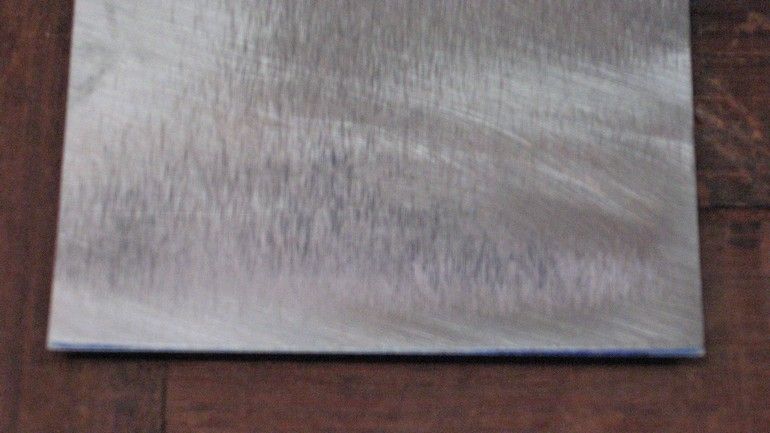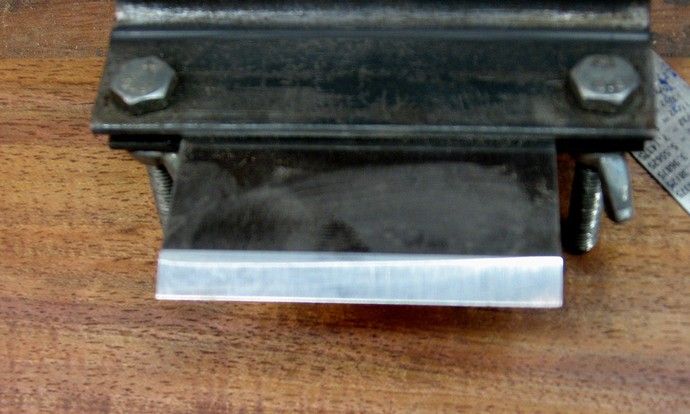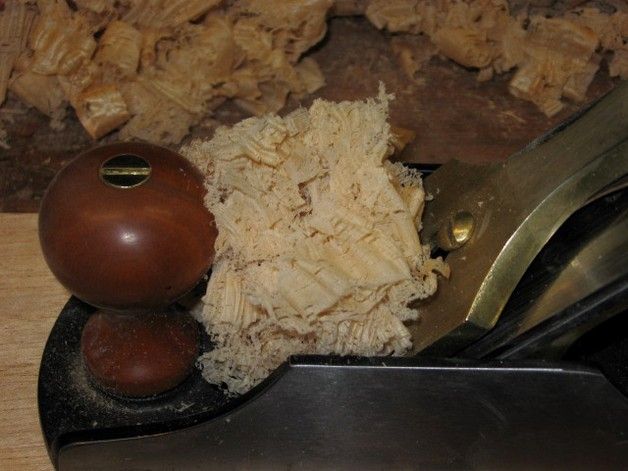Derek Cohen (Perth Oz)
Established Member
For the past week I have had a LN #4-1/2 on loan to use in a review. I am having much difficulty getting a reliable shaving from this plane. The owner of the LN lives on the other side of Oz, so I'd like to diagnose the fault, if any, before I contact him.
I should be setting up this bench plane with my eyes closed. I've done this more times than I can remember. What is happening is that much of the time shavings are only emerging from the sides of the mouth, indicating that the blade is only cutting in these sections. Here is a picture:

Now I have checked and re-checked my waterstones. They are flat, flat, flat. I lap them on 220 grit dry wall mesh between every honing when I compare planes in a review. Every blade is honed in a LV Honing Guide Mk II. I am not experiencing any difficulty with the other planes I am using. And just for good measure, I honed and tested my Stanley #4-1/2, and this was fine.
I checked the sole of the LN by covering it in a blue sharpie (Texta or felt tip to us Aussies), and lapped in on 180 and 360 grit W&D. It was absolutely flat (and even flatter now!). I have checked the frog with a straight edge - flat. The cap iron was new (a recent replacement for the old style cap iron), never used, so I filed it flat (as requested by the owner, who may not actually have used this plane before - the blade looked as though it had its factory grind).
I was not impressed with the blade. The back was far from flat. See here:

Rather than spend hours flattening it, I made sure that the first 1/2" was flat, then used David Charlesworth's tip for a micro-backbevel. A straightedge on the bevel edge post honing (using the camber accessory for the LV honing guide) looked like a decent shape for a smoother, with cambers at the corners. Still, when the blade is set up in the plane and the mouth is closed up, I can feel that the blade sides projected further than the middle section.
In spite of all this, I have been able to obtain full width shavings at times, enough times to completely plane a couple of small boards. The end result was good, but not as great as I expected.
Ideas?
Confused in Perth
Derek
I should be setting up this bench plane with my eyes closed. I've done this more times than I can remember. What is happening is that much of the time shavings are only emerging from the sides of the mouth, indicating that the blade is only cutting in these sections. Here is a picture:

Now I have checked and re-checked my waterstones. They are flat, flat, flat. I lap them on 220 grit dry wall mesh between every honing when I compare planes in a review. Every blade is honed in a LV Honing Guide Mk II. I am not experiencing any difficulty with the other planes I am using. And just for good measure, I honed and tested my Stanley #4-1/2, and this was fine.
I checked the sole of the LN by covering it in a blue sharpie (Texta or felt tip to us Aussies), and lapped in on 180 and 360 grit W&D. It was absolutely flat (and even flatter now!). I have checked the frog with a straight edge - flat. The cap iron was new (a recent replacement for the old style cap iron), never used, so I filed it flat (as requested by the owner, who may not actually have used this plane before - the blade looked as though it had its factory grind).
I was not impressed with the blade. The back was far from flat. See here:

Rather than spend hours flattening it, I made sure that the first 1/2" was flat, then used David Charlesworth's tip for a micro-backbevel. A straightedge on the bevel edge post honing (using the camber accessory for the LV honing guide) looked like a decent shape for a smoother, with cambers at the corners. Still, when the blade is set up in the plane and the mouth is closed up, I can feel that the blade sides projected further than the middle section.
In spite of all this, I have been able to obtain full width shavings at times, enough times to completely plane a couple of small boards. The end result was good, but not as great as I expected.
Ideas?
Confused in Perth
Derek




































